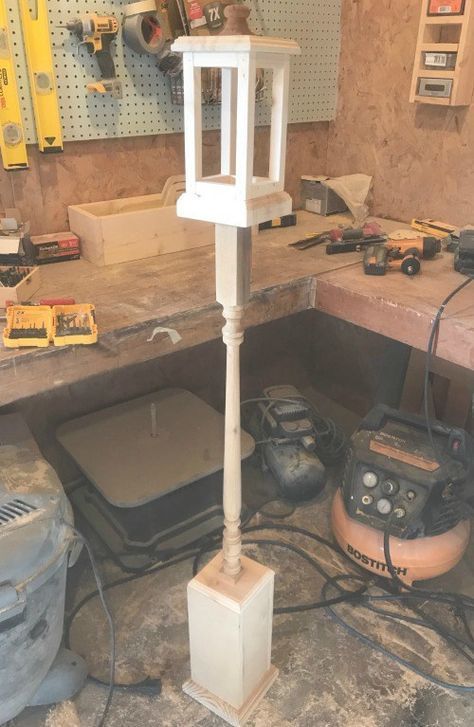Are you interested in woodworking? Are you wondering how to layout a woodworking shop for optimal functionality and efficiency? Having a well-organized woodworking shop is essential for any woodworker, whether you are a hobbyist or a professional.
In this article, we will guide you through the process of creating a practical and efficient layout for your woodworking shop. From assessing space and budget to choosing the right location, selecting essential tools and equipment, designing the layout, organizing storage solutions, implementing safety measures, and establishing maintenance routines, we cover everything you need to know to set up a successful woodworking shop.
When it comes to woodworking, having a well-organized workshop can make all the difference in your productivity and overall enjoyment of the craft. A thoughtfully designed workshop can streamline your workflow, maximize your space and ensure that you have everything you need within reach. In this article, we will walk you through the key factors to consider when designing your woodworking shop layout.
Whether you are setting up a new workshop or looking to optimize an existing one, understanding the importance of a well-organized woodworking shop is crucial. With careful planning and consideration of various elements such as space, budget, location, tools, equipment, layout design, storage solutions, safety measures, and maintenance routines – you can create a functional and efficient workspace that supports your woodworking projects effectively.
Assessing Space and Budget
When it comes to setting up a woodworking shop, one of the most crucial factors to consider is the space and budget available for your project. Determining the right size and layout for your shop will directly impact the efficiency and functionality of your workspace. This section will provide some insights on how to assess your available space and budget, and how to make informed decisions regarding the size and layout of your woodworking shop.
Evaluating Available Space
The first step in determining the right size for your woodworking shop is to evaluate the available space. Consider factors such as the dimensions of the area, ceiling height, existing storage options, as well as any potential restrictions or limitations. Take accurate measurements of the space to ensure that you have a clear understanding of what you have to work with.
Setting a Realistic Budget
Once you have assessed the available space, it’s important to set a realistic budget for setting up your woodworking shop. Consider all aspects such as tools, equipment, materials, utilities, and any necessary renovations or modifications to the space. Setting a budget will help you prioritize which items are essential for starting out and which can be added over time as your budget allows.
Deciding on Shop Size and Layout
After evaluating your space and setting a budget, it’s time to decide on the size and layout of your woodworking shop. Consider factors such as workflow, accessibility to power sources, natural lighting, ventilation, and future expansion possibilities.
Create a rough sketch or plan of how you envision laying out your tools, workbenches, storage areas, and other key elements in your woodworking shop. Keep in mind that flexibility is key – having a versatile layout that can adapt to different projects or reorganize based on evolving needs will be beneficial in the long run.
Choosing the Right Location
When it comes to setting up a woodworking shop, choosing the right location is crucial for creating a functional and efficient work area. Whether you’re converting an existing space or building a new shop from scratch, there are several factors to consider in order to make the most of your workspace.
One of the first considerations when choosing a location for your woodworking shop is access to utilities. You’ll need to ensure that your chosen space has access to electricity, water, and potentially natural gas if you plan on using certain types of equipment. Access to these utilities will impact where you can set up your machinery and workstations within the shop.
Another important factor to consider is ventilation. Woodworking produces a lot of dust and fumes, so having good ventilation in your shop is essential for both your health and the quality of your work. Windows, doors, air filtration systems, and proper exhaust systems are all key components in maintaining good air quality within your woodworking shop.
Lastly, consider the layout of your space in relation to any adjacent rooms or buildings. If noise or vibrations from your woodworking activities would be disruptive to others, it’s important to plan accordingly. Additionally, if you’re planning on expanding your shop in the future, make sure there is room for growth in your chosen location.
| Location Considerations | Description |
|---|---|
| Access to Utilities | Consider access to electricity, water, and natural gas for equipment |
| Ventilation | Ensure good airflow and ventilation for dust and fumes |
| Adjacent Space | Plan for noise control and potential expansion of the woodworking shop |
Essential Tools and Equipment
When it comes to setting up a woodworking shop, having the right tools and equipment is essential for a successful and efficient operation. Before you begin purchasing items for your shop, take some time to research and create a list of must-have items that will enable you to complete your projects with ease.
Power Tools
Investing in quality power tools is crucial for any woodworking shop. Table saws, band saws, planers, and jointers are all essential for cutting and shaping wood. Additionally, having a reliable drill press, router, and sander can make the finishing touches on your projects much easier.
Hand Tools
While power tools are important, hand tools are equally essential for fine detailing and precision work. Some basic hand tools to consider include chisels, hand planes, clamps in various sizes, hammers, screwdrivers, and measuring tools such as squares and tape measures.
Safety Equipment
Prioritizing safety in your woodworking shop is non-negotiable. Make sure to invest in proper safety equipment such as goggles to protect your eyes from flying debris, ear protection to minimize noise from power tools, dust masks for respiratory protection when sanding or cutting wood, and work gloves for handling rough materials.
By taking the time to carefully consider the essential tools and equipment needed for your woodworking shop, you can ensure that you have everything necessary to tackle a variety of projects with confidence and efficiency. Creating a well-thought-out list of must-have items will not only help you stay organized but also prevent unnecessary purchases in the long run.
Designing the Layout
When it comes to designing the layout of your woodworking shop, there are several important factors to consider in order to optimize space and workflow. The first step in designing the layout of your woodworking shop is to take accurate measurements of the available space.
You will need to carefully consider the size and location of each piece of equipment, such as workbenches, table saws, and storage units. By measuring and planning ahead, you can ensure that your shop layout is both efficient and effective.
Another important consideration when designing the layout of a woodworking shop is to create designated areas for specific tasks. For example, you may want to carve out a dedicated area for cutting and sanding wood, as well as a separate area for assembling and finishing projects. This organization will help streamline your workflow and make it easier to find tools and materials when you need them.
In addition to creating designated task areas, it’s also important to consider the flow of movement within the shop. Make sure that pathways are clear and unobstructed so that you can move freely from one workstation to another.
Consider placing frequently used tools and materials within easy reach, while storing less frequently used items in more remote areas of the shop. By carefully planning the layout with these tips in mind, you can create an efficient workspace that promotes productivity and creativity.
Storage Solutions
When it comes to organizing and storing wood, tools, and supplies in your woodworking shop, there are a few key considerations to keep in mind. One of the most important factors is to maximize the use of vertical space.
This can be achieved by installing wall-mounted shelving units, pegboards, or hanging racks to keep your tools and supplies within easy reach. Utilizing overhead storage for wood and other large materials can also free up valuable floor space in your shop.
Another essential aspect of storage solutions in a woodworking shop is proper material and tool organization. Grouping similar items together and labeling storage containers or shelves can greatly improve efficiency and workflow. It’s important to have a designated place for each type of tool or supply so that you can easily locate what you need when working on a project.
In addition to efficient organization and use of space, it’s vital to maintain a clean and clutter-free environment in your woodworking shop. Regularly decluttering and reorganizing your storage areas will not only make it easier to find what you’re looking for but also create a safer work environment. By implementing these storage solutions, you can optimize the layout of your woodworking shop for maximum productivity.
| Storage Solutions | Organizing Tips |
|---|---|
| Maximize vertical space | Utilize wall-mounted shelving units, pegboards, hanging racks, |
| Proper material and tool organization | Group similar items together and label storage containers or shelves |
| Maintenance | Regular decluttering and reorganizing for safety and efficiency |
Safety Measures
When setting up a woodworking shop, safety should be your top priority. A well-organized and secure work environment not only protects you from accidents but also ensures the longevity of your tools and equipment. Here are some essential safety measures to consider when designing your woodworking shop:
1. Install proper lighting: Adequate lighting is crucial for a woodworking shop to ensure that you can see clearly while operating power tools and machinery. Consider installing overhead, task, and ambient lighting to illuminate every corner of your workspace.
2. Ventilation system: Woodworking produces dust and fumes that can be harmful if inhaled. A good ventilation system with an air filtration unit will help maintain air quality in your shop, keeping it safe for extended periods of work.
3. First aid kit and fire extinguisher: Accidents can happen, so it’s important to have a stocked first aid kit readily available in case of minor injuries. Additionally, invest in a fire extinguisher and make sure everyone knows its location and how to use it in case of an emergency.
4. Clutter-free floors: Keep the floors of your workshop free from clutter and cords that could cause tripping hazards. Utilize cable management systems to keep power cords and hoses organized and out of the way.
By implementing these safety measures into the layout of your woodworking shop, you can create a secure environment for yourself and others working in the space.
Remember that safety should always come first, no matter how excited you might be about setting up your dream woodworking shop.
Maintenance and Upkeep
Maintaining a clean and organized woodworking shop is crucial for the safety, efficiency, and longevity of your tools and equipment. Establishing a routine for cleaning and maintaining your woodworking shop will ensure that everything is in proper working condition and that you can easily find what you need when working on a project.
Here are some tips for cleaning and maintaining your woodworking shop:
1. Create a cleaning schedule: Develop a regular cleaning schedule to ensure that your woodworking shop stays clean and organized. This can include daily sweeping, weekly dusting, and monthly deep cleaning.
2. Organize your tools: Invest in tool storage solutions such as wall-mounted racks, pegboards, or tool chests to keep your tools off the floor and easily accessible. This not only prevents accidents but also ensures that you can find the right tool when you need it.
3. Check equipment regularly: Regularly inspect your power tools and machinery for any signs of wear or damage. Replace worn-out parts, sharpen blades, and lubricate moving parts as needed to keep everything running smoothly.
4. Proper waste disposal: Have designated areas for wood scraps, sawdust, and other waste materials to prevent clutter in your workshop. Dispose of these materials properly to maintain a clean and safe environment.
5. Safety first: In addition to keeping things clean, make sure to conduct regular safety checks on fire extinguishers, first aid kits, and ventilation systems to ensure a safe working environment.
By following these maintenance tips for your woodworking shop, you’ll be able to create an efficient and safe work environment that enhances productivity while prolonging the life of your tools and equipment.
Conclusion
In conclusion, creating a well-organized woodworking shop is essential for any woodworker, whether you are a hobbyist or a professional. By following the tips and guidelines provided in this article, you can effectively layout your woodworking shop to maximize space and workflow efficiency. Remember, it’s crucial to assess your space and budget, choose the right location, select the essential tools and equipment, design an optimal layout, implement storage solutions, prioritize safety measures, and establish a maintenance routine.
One key takeaway from this article is the importance of designing a layout that promotes a smooth workflow in your woodworking shop. Consider factors such as the natural flow of work, ease of access to tools and materials, and creating designated areas for different woodworking tasks. By doing so, you can streamline your work processes and make the most out of your available space.
Additionally, always prioritize safety in your woodworking shop. Implementing safety measures such as proper ventilation, dust collection systems, fire extinguishers, first aid kits, and wearing personal protective equipment is crucial for preventing accidents and injuries. Lastly focus on maintaining a clean and organized workspace to enhance productivity. By following these key principles on how to layout a woodworking shop presented here, you can set yourself up for success in pursuing your passion for woodworking.
Frequently Asked Questions
How Do You Design a Workshop Layout?
When designing a workshop layout, it’s important to consider the workflow, safety, and space utilization. Start by identifying the areas for different tasks like cutting, assembly, and finishing. Then, ensure that the tools and workstations are arranged logically to minimize unnecessary movements.
How Do You Plan a Woodworking Workshop?
Planning a woodworking workshop involves assessing your needs and available space. Consider the types of projects you’ll be working on and the necessary tools and equipment. Factor in adequate lighting, ventilation, and dust collection. Then, create a layout that allows for efficient movement and easy access to tools.
What Is the Best Size for a Woodworking Shop?
The best size for a woodworking shop depends on several factors like the type of woodworking being done, available space, budget, and how many people will be using the shop. Generally, a one-car garage size or larger is considered ideal as it provides enough room for tools, workbenches, storage, and movement without feeling cramped.

Hi everyone! I’m a woodworker and blogger, and this is my woodworking blog. In my blog, I share tips and tricks for woodworkers of all skill levels, as well as project ideas that you can try yourself.





